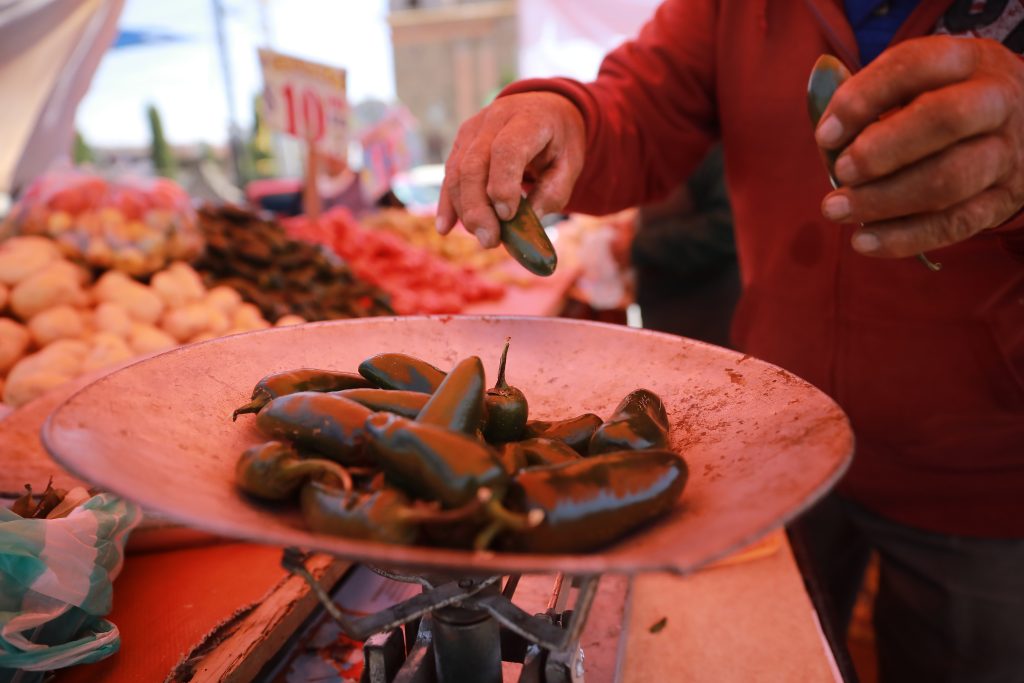Why Do (Some) Humans Love Chili Peppers?
As someone who grew up in the Philippines, I have always loved hot, spicy foods. A typical Filipino meal includes some mix of soy sauce, fish sauce, vinegar, citrus, and peppers, which can be used to customize the flavor of a dish. I always make sure to pile on lots of red and green peppers or to add a dash of Tabasco. At one point, I even planted some chili plants in my family’s backyard and tried making hot sauce with my cousin Franz. [1] [1] I don’t recommend readers try this without using gloves: We ended up burning our hands in the process. Many years later, during the pandemic, I tried it again and finally succeeded in making my own hot sauce by fermenting homegrown peppers with vinegar and salt, following guides like this one.
When I stayed for an extended period in Mexico in 2021, one of the biggest pleasures was the food’s spiciness—from the salsa verde (a green sauce usually spiced by jalapeño peppers) to the aguachile (a ceviche-like dish typical of Mexico’s Pacific coast, made of shrimp marinated in lime and chili peppers, among other ingredients). Beyond the kinds of peppers that one can buy in local grocery stores in many places in the world—such as habañeros, jalapeños, and chile de arbol—there was a bewildering assortment of peppers with distinct shapes, sizes, and levels of spiciness. These ranged from the peppercorn-like chiltepin to the bell-like cascabel, all readily available in the nearest supermercado.
In fact, all of the world’s chili peppers—including the labuyo peppers that we typically use in the Philippines—likely came from the first domesticated chili plants (Capsicum annuum) in what is now Mexico. They were imported as part of the Columbian exchange, which saw the two-way transfer of ideas, animals, plants, diseases, and people between the Eastern Hemisphere and the Americas following Christopher Colombus’ first transatlantic voyage in the late 15th century.
Unthinkable as it may sound today, the cuisines we have come to associate with spiciness—Indian, Thai, Korean, and Chinese, among others—had no chili peppers at all before their introduction in the 16th century onward. Prior to that, those cuisines relied on other spices or aromatics to add heat to dishes, such as ginger, likely native to southern China, or black pepper, native to India.
How did chili peppers become part of the human diet beginning in the Americas an estimated 6,000 to 10,000 years ago? And why were they eventually embraced by the rest of the world?
These questions fascinate me not just because of my personal love for hot sauce, but because, as an anthropologist, I am deeply interested in how culture shapes our human senses of sight, hearing, touch, smell, and taste.
While our bodily senses are mediated by various receptors, how we interpret sensory stimuli depends on our previous experiences and our personal preferences, both of which are in turn influenced by the environments we grow up in. To give just one example, anthropologists have investigated how even color (that is, how we would “see” or visually perceive a particular object) is not universal but differs across societies.
Some evolutionary biologists have proposed that the human propensity for spiciness is borne of necessity. They posit that because peppers (and other spicy foods, including wasabi) have natural antimicrobial properties that can help preserve perishable foods, humans developed a taste for them, particularly in tropical climates where food spoils easily. (In the evolution of the chili plant itself, the emergence of capsaicin, which creates the burning sensation in chiles, appears to be linked with its ability to ward off fungi.)
Psychology researchers, on the other hand, have posited that some people’s preference for capsaicin-containing foods is related to thrill-seeking tendencies. Psychologists Paul Rozin and Deborah Schiller concluded this back in 1980, drawing on an experiment that involved giving people increasingly spicy doses of chili. “Eating of chili, riding on roller coasters, taking very hot baths, and many other human activities can be considered instances of thrill seeking or enjoyment of ‘constrained risks,’” they wrote. More recent studies have associated the preference for chiles with personality traits like “sensation seeking” and “sensitivity to reward.” The recent popularity of chili eating competitions can be seen as an extreme example of these tendencies.
Beyond these biological and psychological investigations, anthropologists and those in related fields have also contributed to our understanding of why particular groups tend to prefer spicier foods by bringing in the element of culture. As anthropologists have documented over the years, humans can eat a diverse range of foods—so our decisions about what to eat often speak to much more than our biological or psychological needs. They reflect our societies and their values.
In some parts of Mexico, for instance, the preference for hotter foods is tied to notions of national and regional identities. The cultural historian Esther Katz cites an expression shared by Indigenous Mixtec people from Oaxaca: “Somos fuertes porque comemos puro chile” (“We are strong, since we eat nothing but pepper”). The association between eating spicy foods and certain personality traits, such as courage or spunk, can be a way for some people to distinguish themselves from other groups, even those living within the same country.
Further illustrating this point, chili peppers figure in regional identities in Communist China, and even regional rivalries. A common saying goes: “The Sichuanese are not afraid of hot chiles; no degree of heat will frighten off the people of Guizhou; but those Hunanese are terrified of food that isn’t hot!” The leader of the Communist revolution, Mao Zedong, was a native of Hunan who pointedly connected the revolutionary spirit with the ability to handle spice.
Mao is said to have remarked: “Without chili peppers there would be no revolution.”
Spiciness is also connected in some places with gender identities. For instance, in Japan, as anthropologist Jon Holtzman has investigated, men were traditionally expected to prefer spicy foods (and alcohol) and to disdain sweet foods. Attitudes toward food preferences have changed alongside shifts in Japanese societal notions of masculinity in the 20th century—though sweetness is still sometimes associated more with women and children.
Of course, it goes without saying that tastes change along with societies. Indeed, certain food products that may seem unpalatable or even disgusting to some can become well-loved by others. Take, for instance, the food spread Vegemite becoming part of Australian national identity, or guinea pigs, traditionally eaten by Indigenous communities in the Andes, becoming part of Peruvian fine dining in recent years.
And even within a particular group, individuals have their own preferences. Associating certain ethnicities with food preferences can lead to inaccurate generalizations and damaging stereotypes. An eighth grader named Jacquelin Rojas from the U.S. summarized this point succinctly on a website inviting people to distill their thoughts about race. “Not all Mexicans like spicy foods,” she wrote.
In the end, there is no single explanation that can account for why some people desire spicy foods while others don’t. Regardless, the travels of chili peppers across continents and over the centuries shows just how far some humans—myself included—will go to spice up our diets and everyday lives.



































